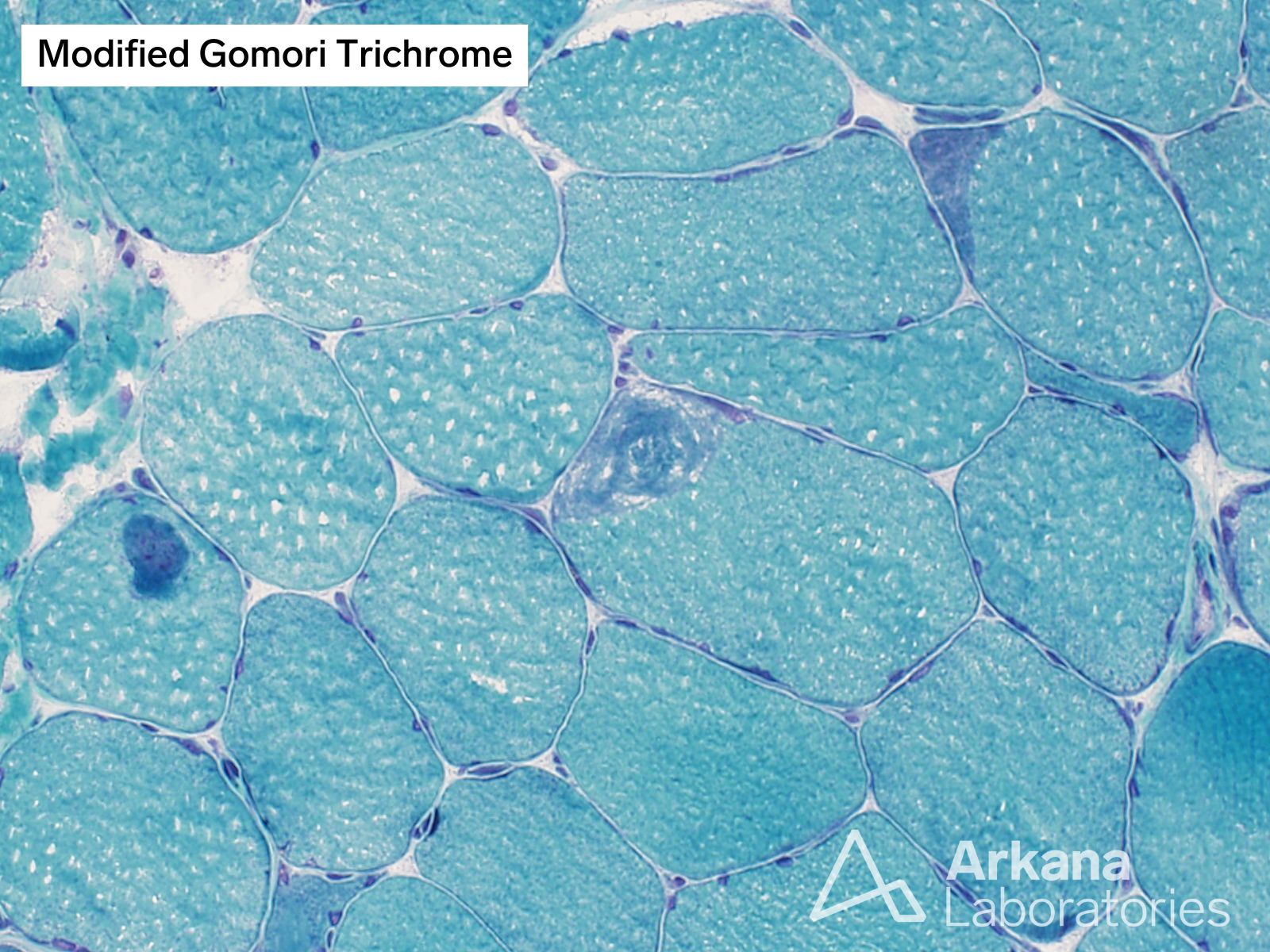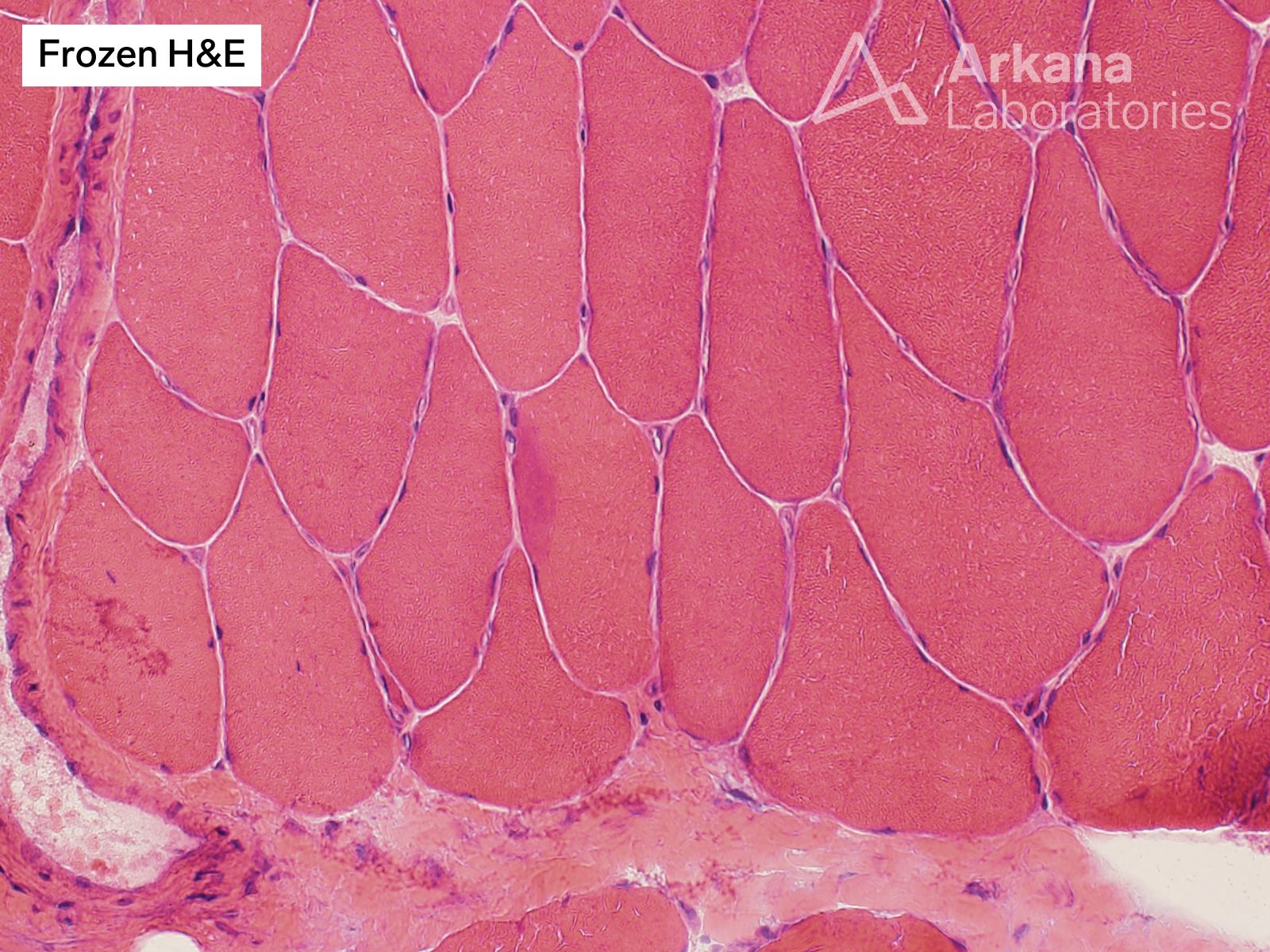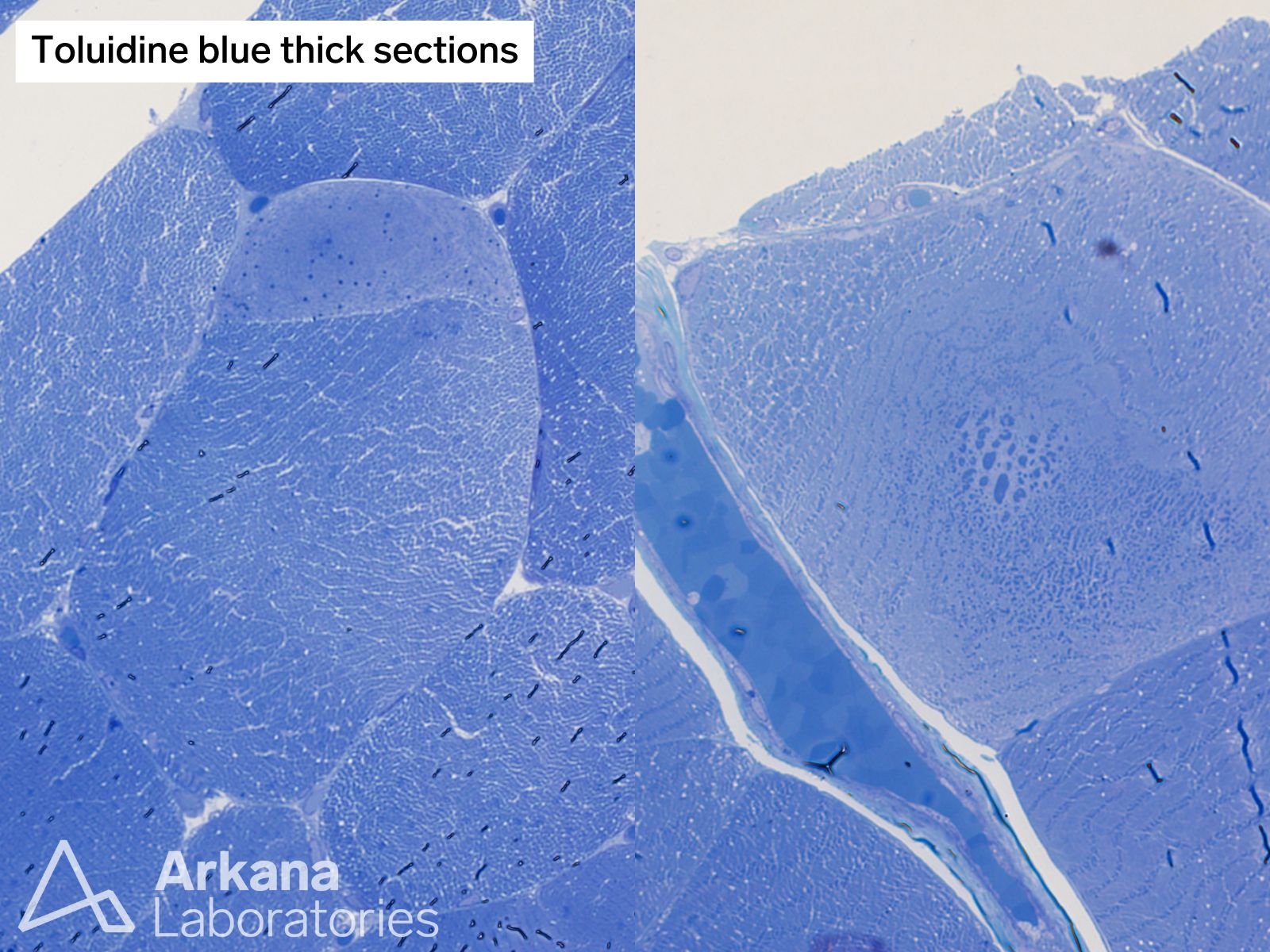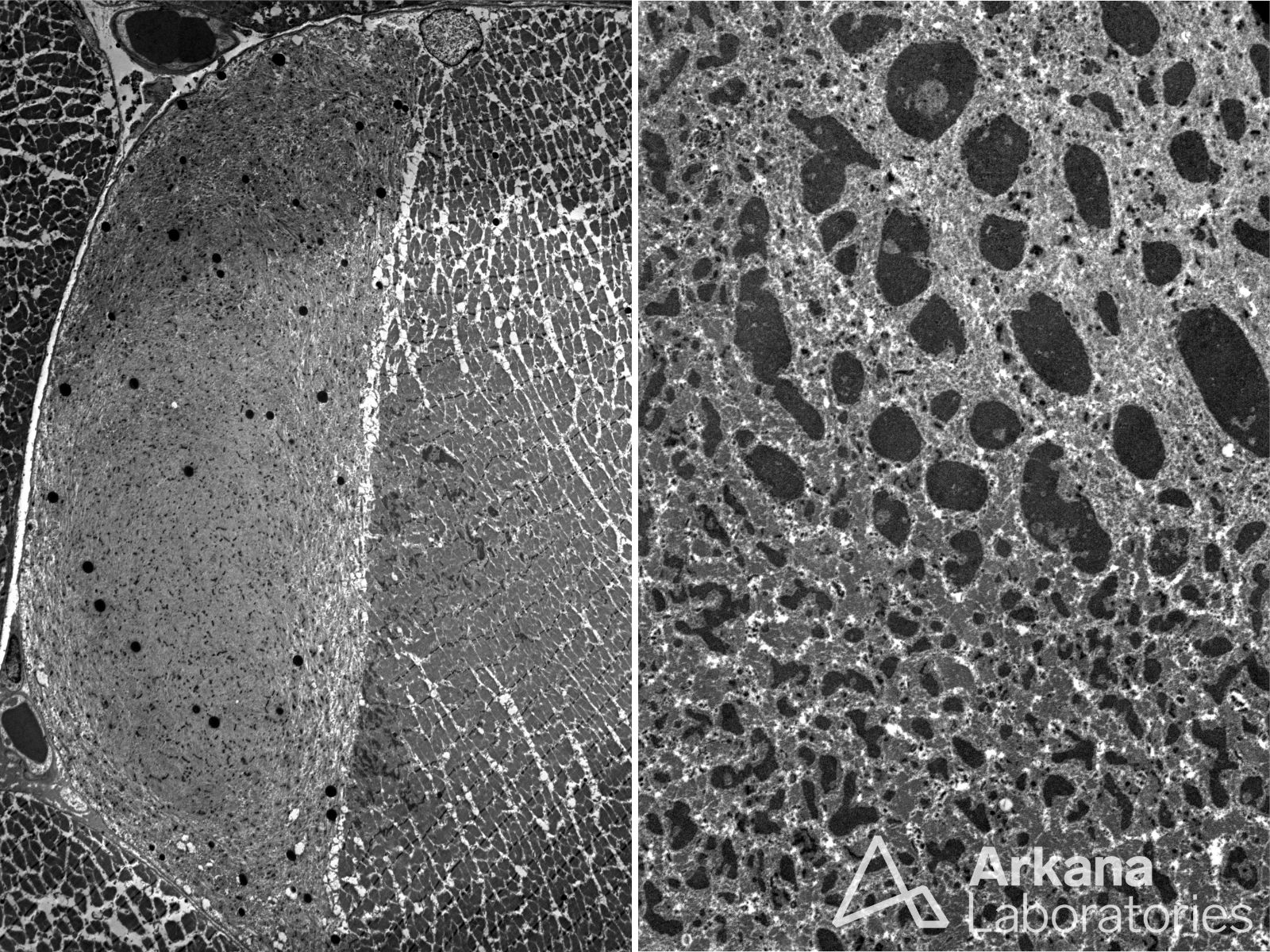Clinical History:
This 25-year-old patient presented with complaints of lower extremity muscle weakness. Their past medical history was significant for chronic back pain. Laboratory studies showed elevated CPK. No myotoxic medications were noted in the patient’s home medication list.
What is your diagnosis based on the reference images below?
Answer:
Cap myopathy
Cap myopathy is most often associated with mutations in ACTA1 (skeletal muscle actin alpha 1), TPM2 (tropomyosin 2) and TPM3 (tropomyosin 3) genes. However, cap-type structures have also been reported in patients with mutations in NEB (nebulin), DES (desmin) and MYPN (myopalladin) genes.
Reference(s) / Additional Reading:
- https://rarediseases.info.nih.gov/diseases/11915/cap-myopathy
- Fidzianska A, Badurska B, Ryniewicz B, Dembek I. “Cap disease”: new congenital myopathy. Neurology. 1981 Sep;31(9):1113-20. doi: 10.1212/wnl.31.9.1113. PMID: 7196531.
- Cuisset JM, Maurage CA, Pellissier JF, Barois A, Urtizberea JA, Laing N, Tajsharghi H, Vallée L. ‘Cap myopathy’: case report of a family. Neuromuscul Disord. 2006 Apr;16(4):277-81. doi: 10.1016/j.nmd.2006.01.014. Epub 2006 Mar 13. PMID: 16531045.
- Goebel HH, Dittmayer C, Stenzel W. Congenital myopathies: The current status. Indian J Pathol Microbiol. 2022 May;65(Supplement):S271-S276. doi: 10.4103/ijpm.ijpm_1031_21. PMID: 35562159.
Quick note: This post is to be used for informational purposes only and does not constitute medical or health advice. Each person should consult their own doctor with respect to matters referenced. Arkana Laboratories assumes no liability for actions taken in reliance upon the information contained herein.




